St Peter's Lutheran Church
Scallan Street, Stawell
Built 1858 by Hill & Son, London for residence of Peter Davis, Prahran.
Installed 1860 St Andrew's Church, Brighton.
Installed 1923 Holy Trinity Anglican Church, Stratford.
Renovated and installed present location 1968-69 by John Kriewaldt.
Restored 2021 Australian Pipe Organs Pty Ltd.
2 manuals, 12 speaking stops, 2 couplers, mechanical action
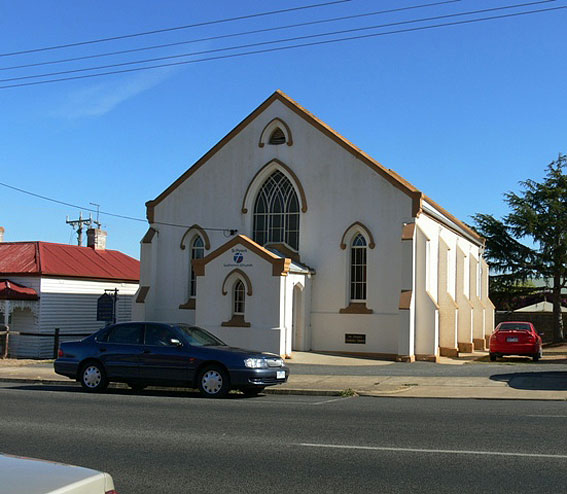
St Peter's Lutheran Church, Stawell: façade facing Scallan Street
[photograph by John Maidment (9 October 2012)]
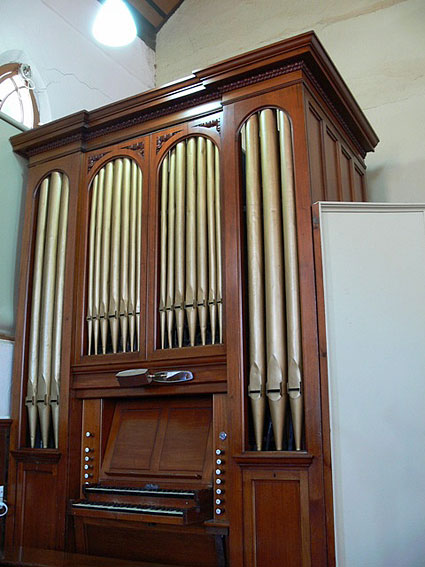
Historical and Technical Documentation by John Maidment
OHTA, 2009 (last updated December 2021)
St Peter’s Church was built in 1874 as a Congregational Church to the design of the Revd J.G. Wilson. The building became disused and was taken over by St Peter’s congregation, which was formed in September 1958. This attractive painted brick building incorporates fittings from two redundant Lutheran churches in the area, including a carved altar and pulpit from Murtoa, possibly that designed and made by Robert Prenzel, and a 17th century lectern obtained in England.
The organ now in St Peter’s Church was built in 1858 by Hill & Son, London. The extract from the firm’s estimate book reads:
Jan 10 1858 Mr Davis, Melbourne, Australia. New chamber organ.
CC-F Gt Op dp (7wd bass) Dulc ten.C. StDp. Prin. 12. 15. Flute 4 tenC.
Sw (tenor C carried out with stopped bass) OpDp. StDp. Prin. Oboe.
Ped C-E Bourd. 2cplrs. 3 comb.pedals. Mahogany case, gilt front pipes. "1/3 tin".
Complete & packed £340. "10 p.c."
A full account of the instrument may be found in the Melbourne newspaper The Argus of 17 March 1860, p.2.
MONDAY, APRIL 2.
First-class Chamber Organ.
BEAUCHAMP BROTHERS have received instructions from Mr. Peter Davis, who is proceeding to Europe, to SELL by Auction, at his residence, at Great Dandenong-road, Gardiner, five miles from town, on Monday, April 2, at 11 o’clock.
The undermentioned chamber organ.
This instrument was built by the celebrated builders Hill and Son, of London, to the express order of Mr. P. Davis, with instructions to manufacture the finest instrument they were capable of turning out, without regard to cost, limiting them to external dimensions only. The organ has been in the colony 15 months, and having passed through two summers without the slightest detriment, has become thoroughly seasoned to the climate.
The particulars of the instrument are as follows:-
Two manuals
Great Organ CC to F in alto. |
54 notes 42 “ 54 “ 54 “ 42 “ 54 “ 54 “ 354 notes |
|
| Swell Organ, with Venetian swell, tenor C to F, - 12 notes carried down to CC on the stop bass. | ||
| 1. Open diapason 2. Stop diapason 3. Principal 4. Hautboy |
42 notes “ “ “ 168 notes |
|
| Pedal Organ, C C C to F, 30 notes, Bourdon, 16ft. tone |
30 notes |
|
Total number of pipes |
552 | |
Couplers ------ Swell to great organ Great to pedals |
||
N.B. The pipes of the Flute and the upper half of Stop diapason are of mahogany throughout.The case, which is about 7ft. 6in. wide, by 4ft. 6in. deep, and 11ft. high, is a chaste design, French polished mahogany, with 26 richly-gilt speaking pipes in front.
The action of both manuals and pedals is of mahogany, and finished in the most complete manner; the composition pedal action is of oak and beech.
Although built for a chamber instrument, the pipes are a full church scale, and at present voiced sufficiently loud for any of the ordinary congregations, and may without trouble be voiced considerably louder.
The tone of the instrument is excellent, combining great power with sweetness, and the metal pipes composed of best metal; and in design, material and finish, it does credit to the celebrated builders; and is without doubt, the finest instrument of its kind in the colonies.
Terms, Liberal, Declared at sale.
The instrument was then installed at St Andrew’s Anglican Church, Brighton until 1923, when it was moved to Holy Trinity Church, Stratford, in eastern Victoria, probably by W.L. Roberts. It was moved to its present location in 1968-69 by John Kriewaldt and remains largely intact.
The organ is of international significance as an exceptionally rare example of a Hill chamber organ of the period, clothed in an elegant case, of classical inspiration, embellished with an elaborate cornice incorporating egg and dart moulding. The swell is contained within a diminutive box of ‘dovecote’ formation, typical of Hill’s practice.
The only instrument in Britain that is comparable is at St Nicholas’, Ingrave (1856) and this is two stops smaller. The Stawell organ has casework of superlative quality, in Spanish mahogany, and this material has been also used for the trebles of the wooden flute ranks.
The organ received an extensive restoration in 2021 by Australian Pipe Organs Pty Ltd under the direction of Daniel Bittner. The work was assisted by a substantial grant from the Heritage Victoria Living Heritage Grants Program and a tax-deductible appeal conducted by the Organ Historical Trust of Australia.
The work has consisted of the following:
• Extensive repair of the metal pipework, some of it badly damaged from inexpert handling, together with detailed regulation and fitting of new tuning slides;
• Pitch correction to C 540;
• Restoration of the two manual slider windchests, repairing splits to the tables, recovering pallets and fitting new pulldown wires and brass plates;
• Construction of a new flat pedal board in mahogany and blackwood (the original was replaced at Stawell with a radiating-concave board from an electronic organ);
• Repairs to the casework in matching mahogany, particularly sections cut out around the replacement pedal board and reconstructing the left-hand case cornice sawn off at Stawell with its egg and dart mouldings;
• New drawstops and engraved labels and a new brass Hill & Son nameplate (both modelled upon the contemporary Hill & Son chamber organ at St Nicholas, Ingrave, UK);
• Construction of a new manual to pedal roller board incorporating surviving original elements (the original destroyed when the replacement pedal board fitted);
• Repair of the two manual roller boards;
• Construction of a new mahogany organ bench in Hill & Son style;
• Repainting of the interior of the dovecote swell box in the original red oxide colour (it had been painted in white gloss);
• Repair of the bruised façade pipes and refinishing in gold paint.
The organ was re-erected at Stawell in November 2021 and re-opened in 2022. The overall work took far longer than anticipated owing to COVID closures but the end result is highly gratifying, and the instrument now has a bright, articulate and characterful sound that had been diminished for a long time.
PRE-RESTORATION IMAGES
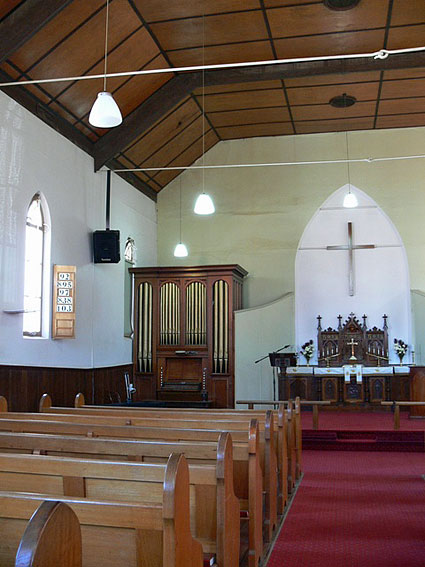 |
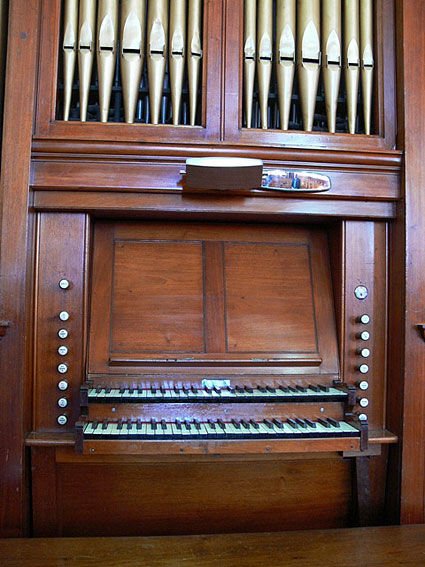 |
|
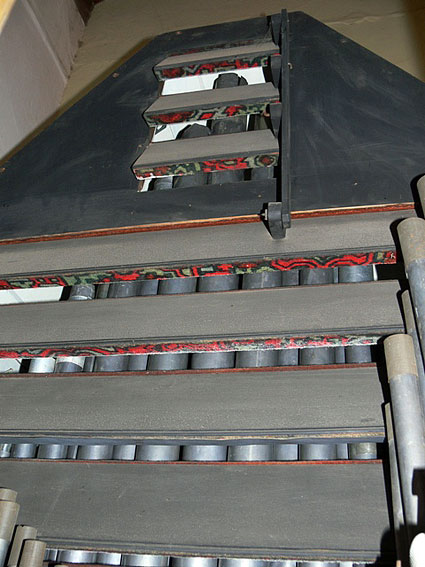 |
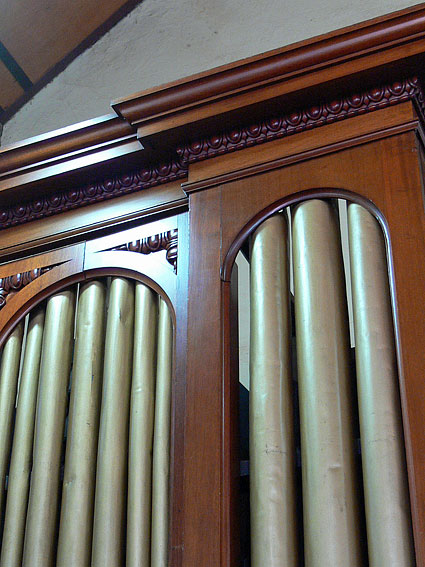 |
|

|
||
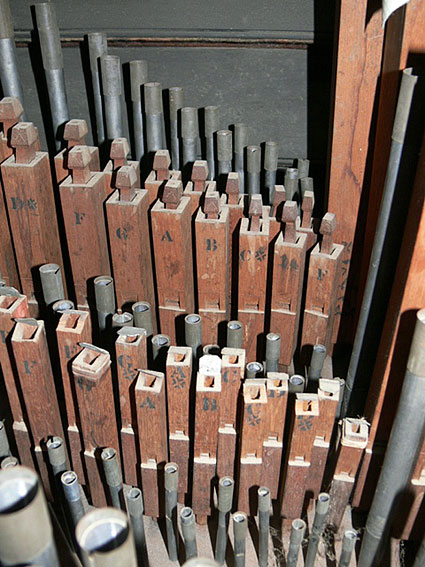 |
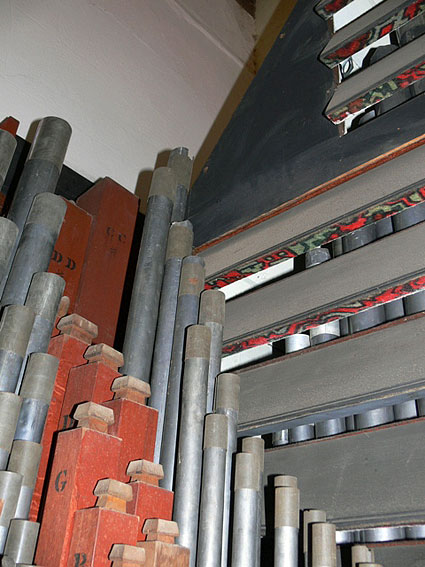 |
|
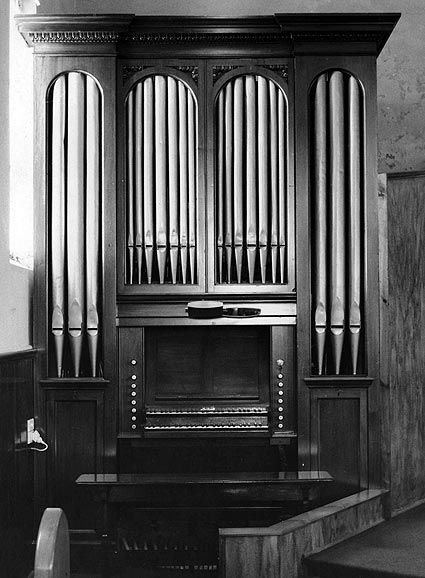
|
||
Photos JRM (April 2009)
POST-RESTORATION IMAGES

St Peter’s Lutheran Church, Stawell, Vic – organ case
[photograph by Daniel Bittner (December 2021)]
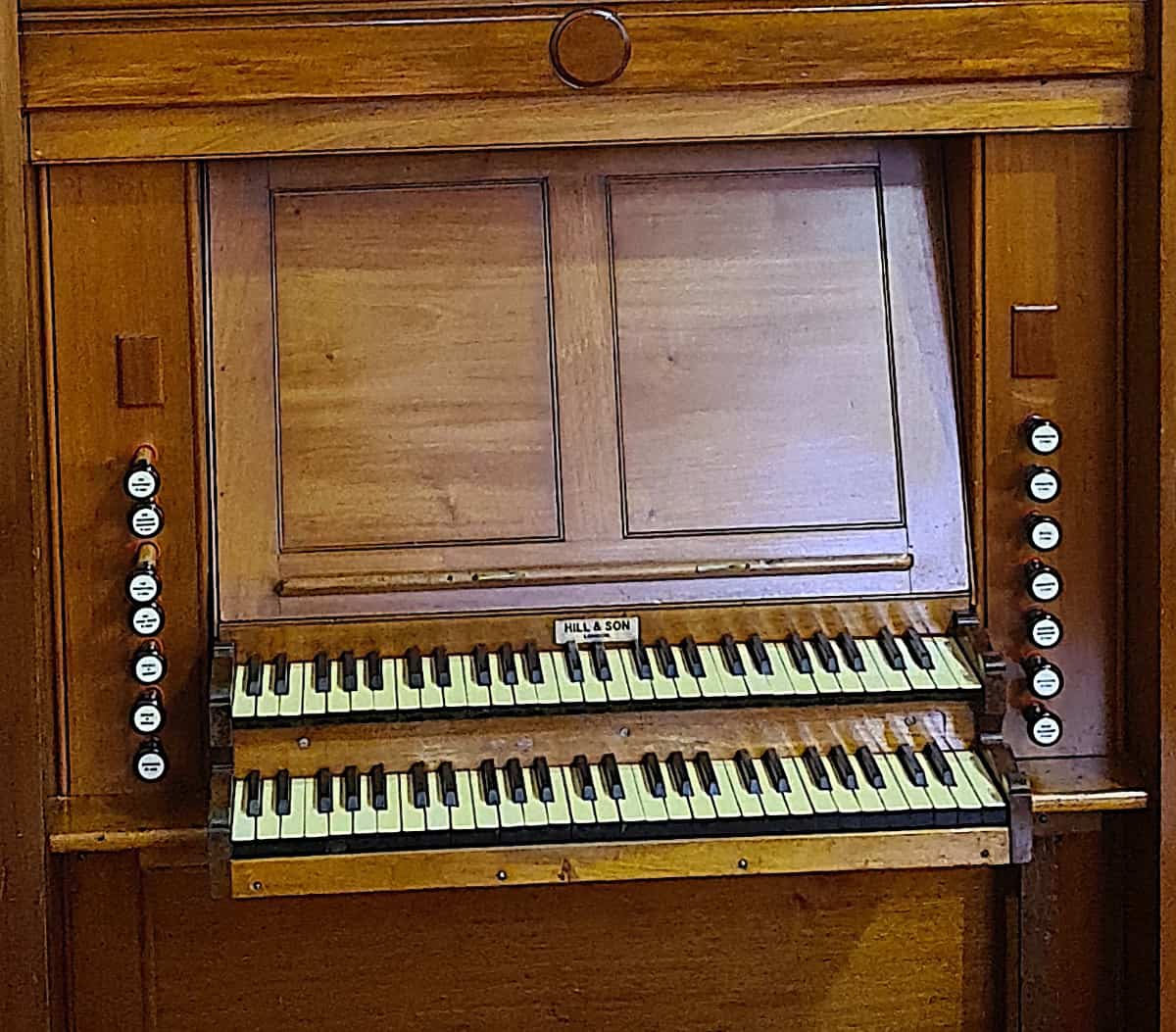
St Peter’s Lutheran Church, Stawell, Vic – console
[photograph by Daniel Bittner (December 2021)]
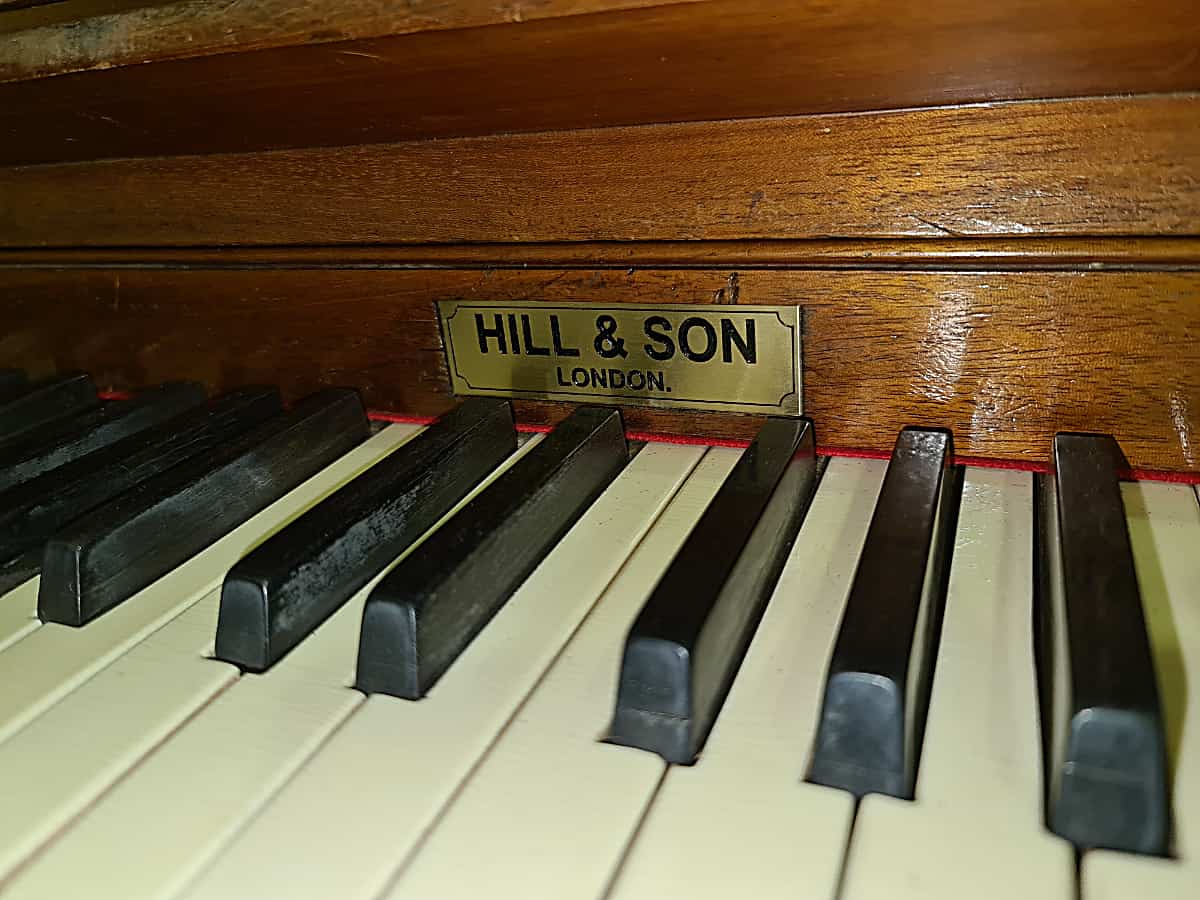
St Peter’s Lutheran Church, Stawell, Vic – nameplate
[photograph by Daniel Bittner (December 2021)]
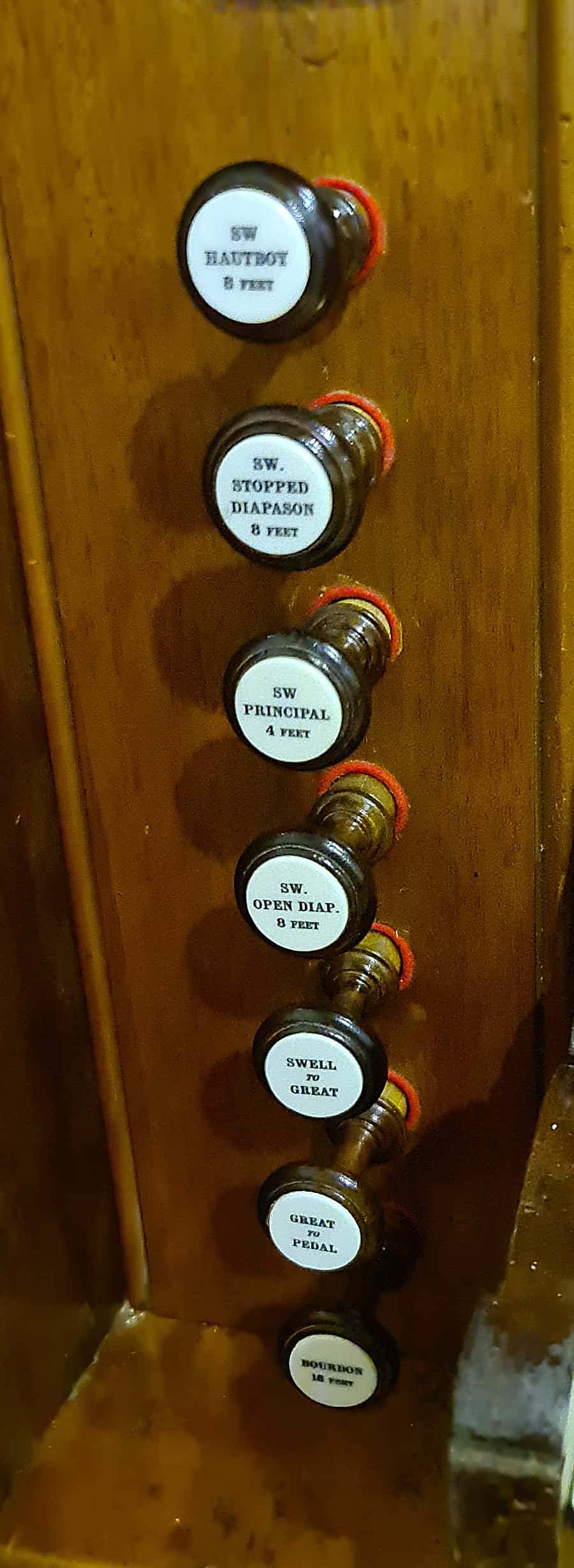
St Peter’s Lutheran Church, Stawell, Vic – left-hand stop jamb
[photograph by Daniel Bittner (December 2021)]

St Peter’s Lutheran Church, Stawell, Vic – right-hand stop jamb
[photograph by Daniel Bittner (December 2021)]

St Peter’s Lutheran Church, Stawell, Vic – reconstructed pedal board
[photograph by Daniel Bittner (December 2021)]
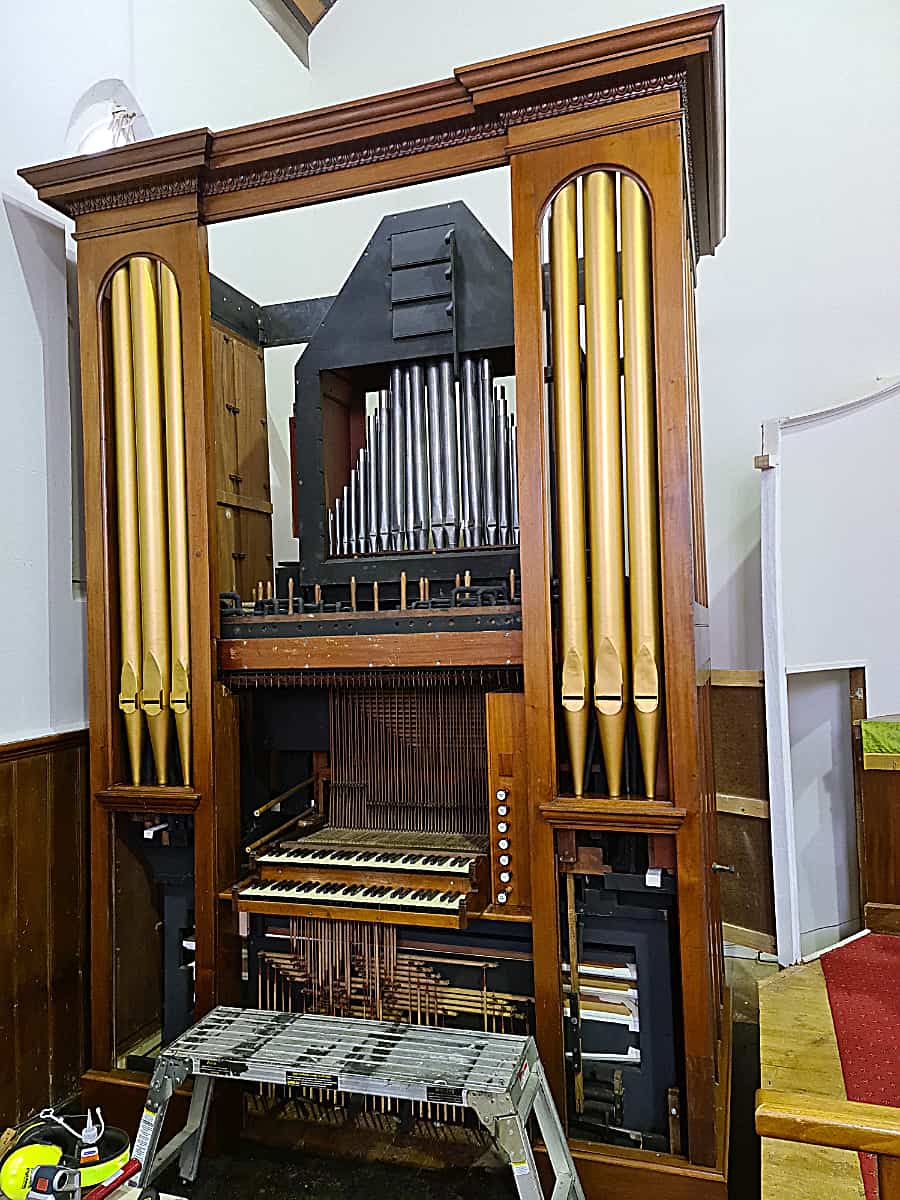
St Peter’s Lutheran Church, Stawell, Vic – organ partially erected
[photograph by Daniel Bittner (December 2021)]

St Peter’s Lutheran Church, Stawell, Vic – Great pipework
[photograph by Daniel Bittner (December 2021)]
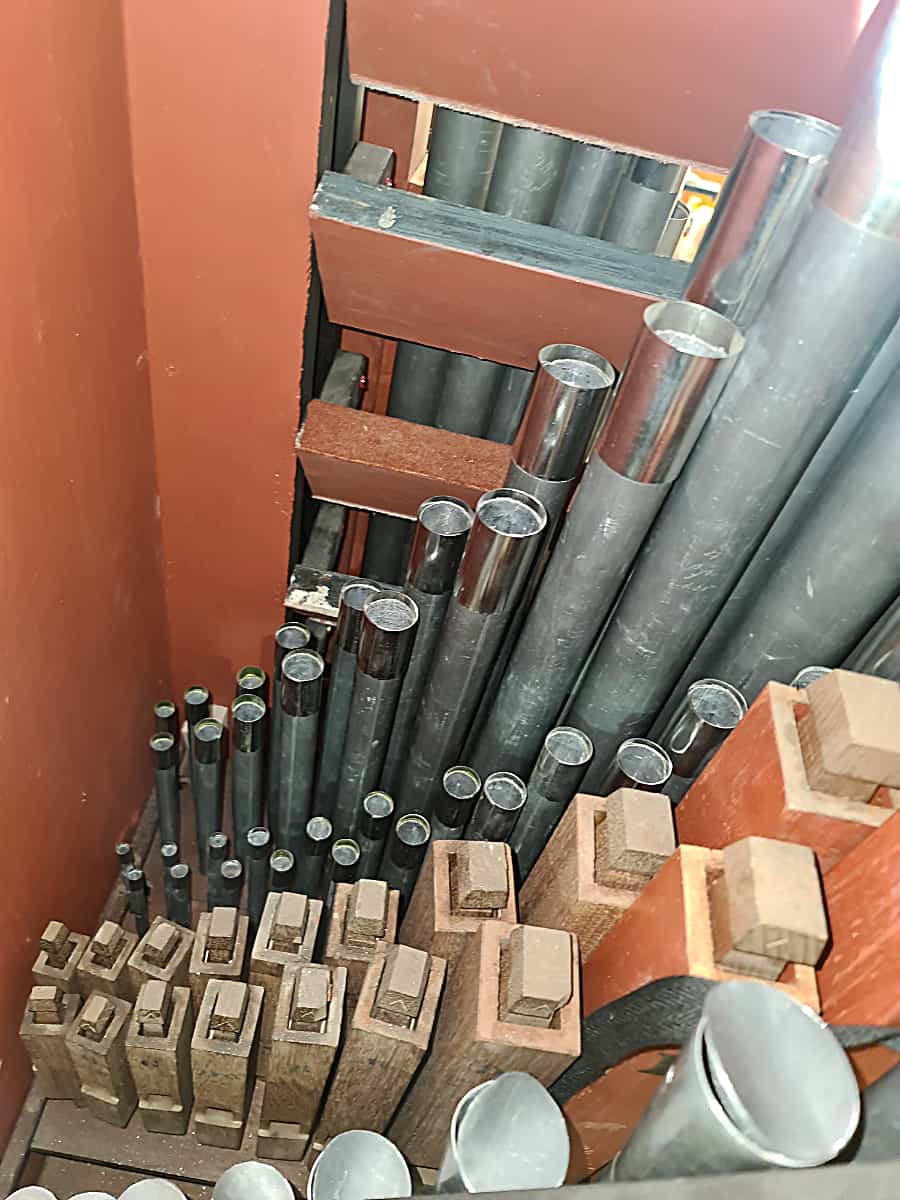
St Peter’s Lutheran Church, Stawell, Vic – Swell pipework
[photograph by Daniel Bittner (December 2021)]
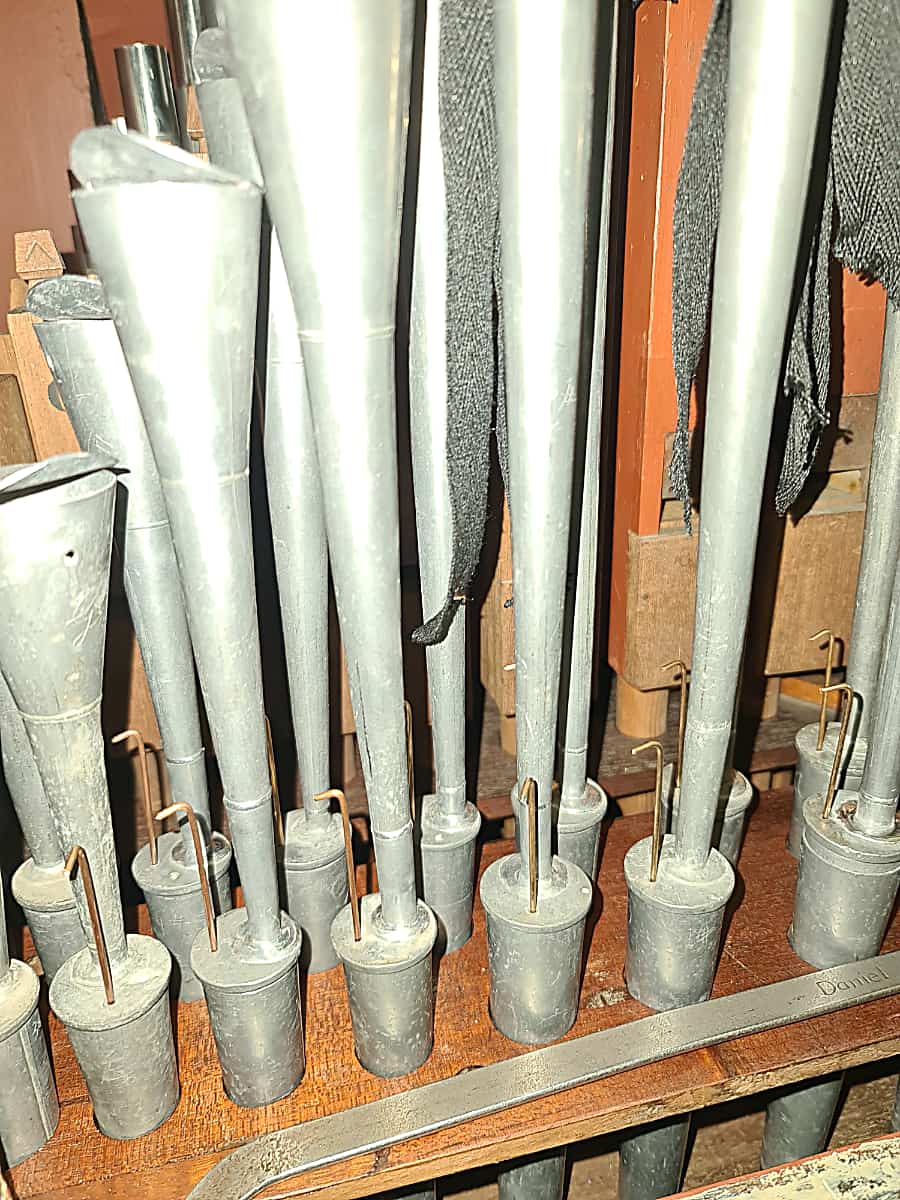
St Peter’s Lutheran Church, Stawell, Vic – Hautboy
[photograph by Daniel Bittner (December 2021)]
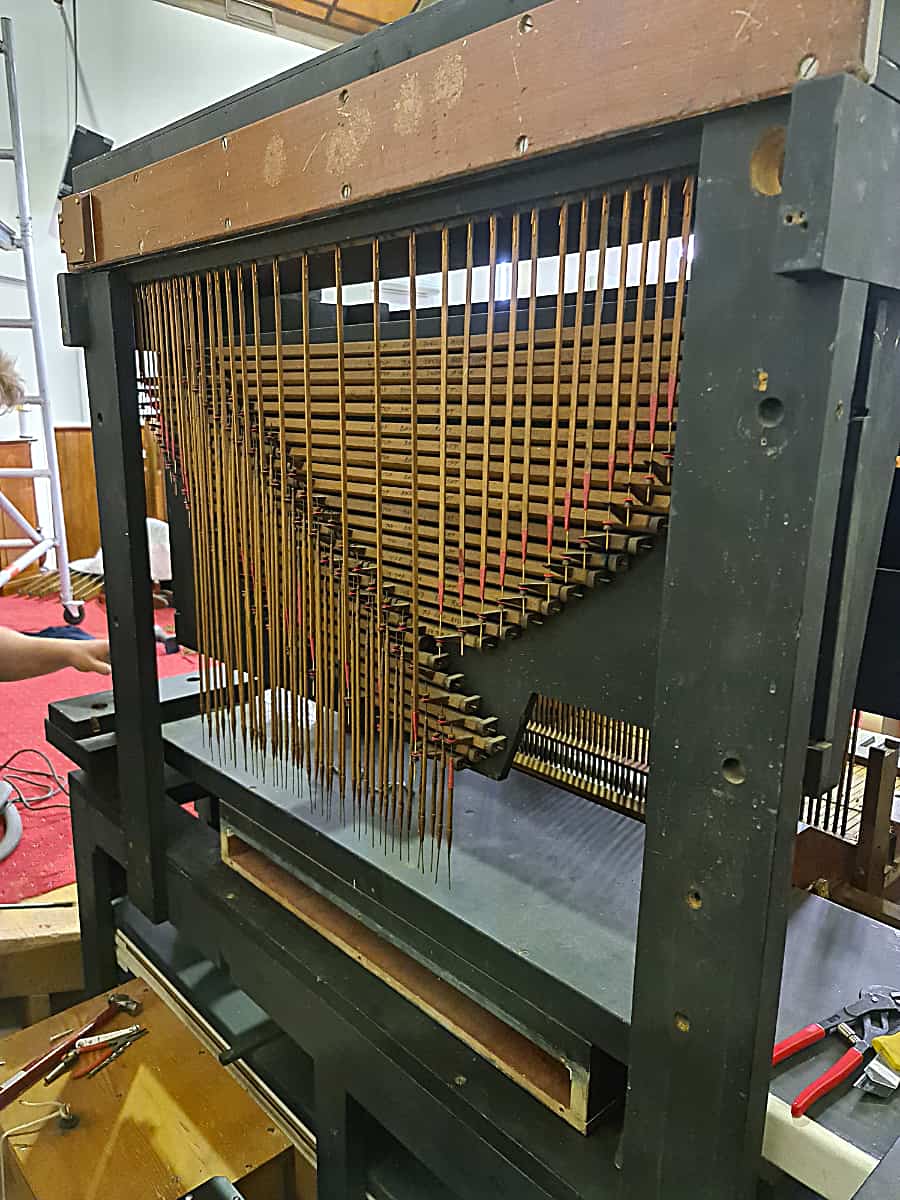
St Peter’s Lutheran Church, Stawell, Vic – action
[photograph by Daniel Bittner (December 2021)]
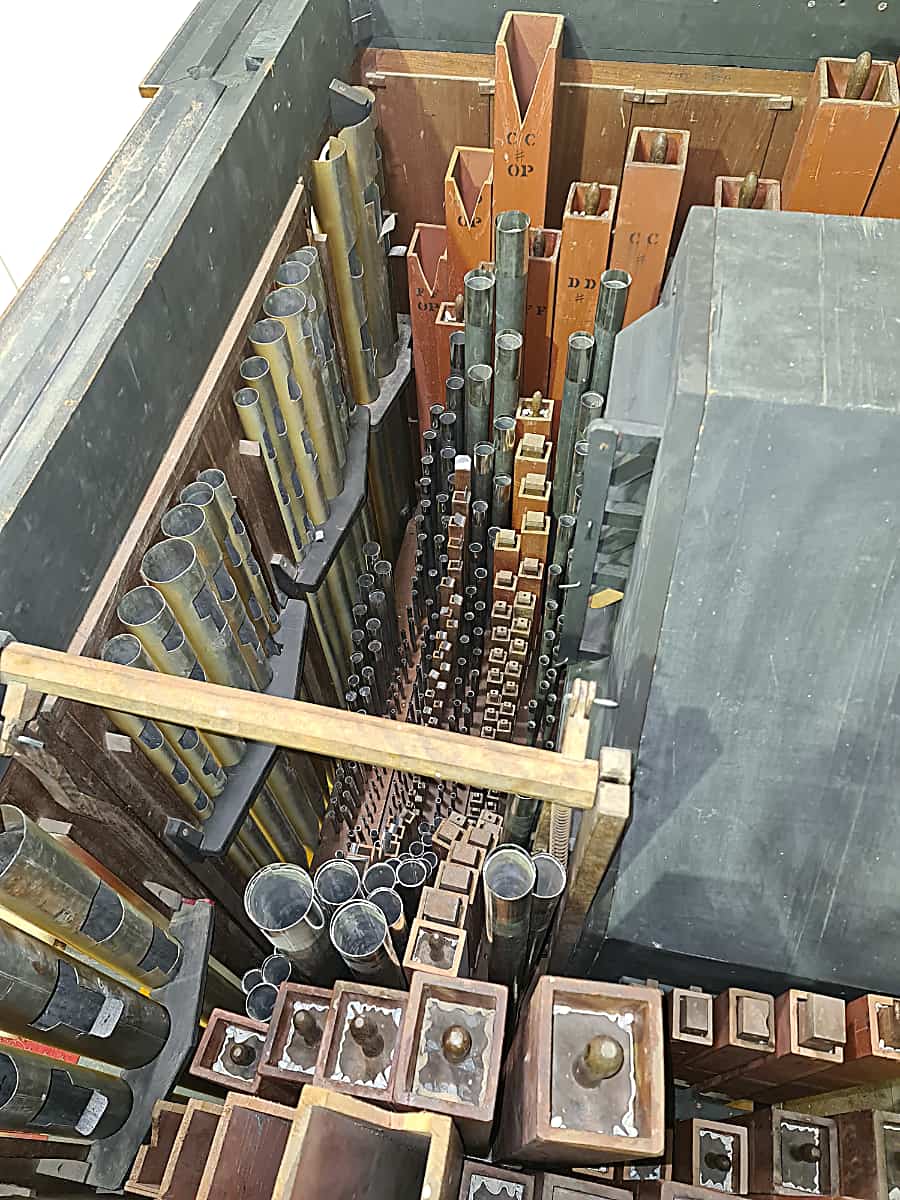
St Peter’s Lutheran Church, Stawell, Vic – pipework
[photograph by Daniel Bittner (December 2021)]